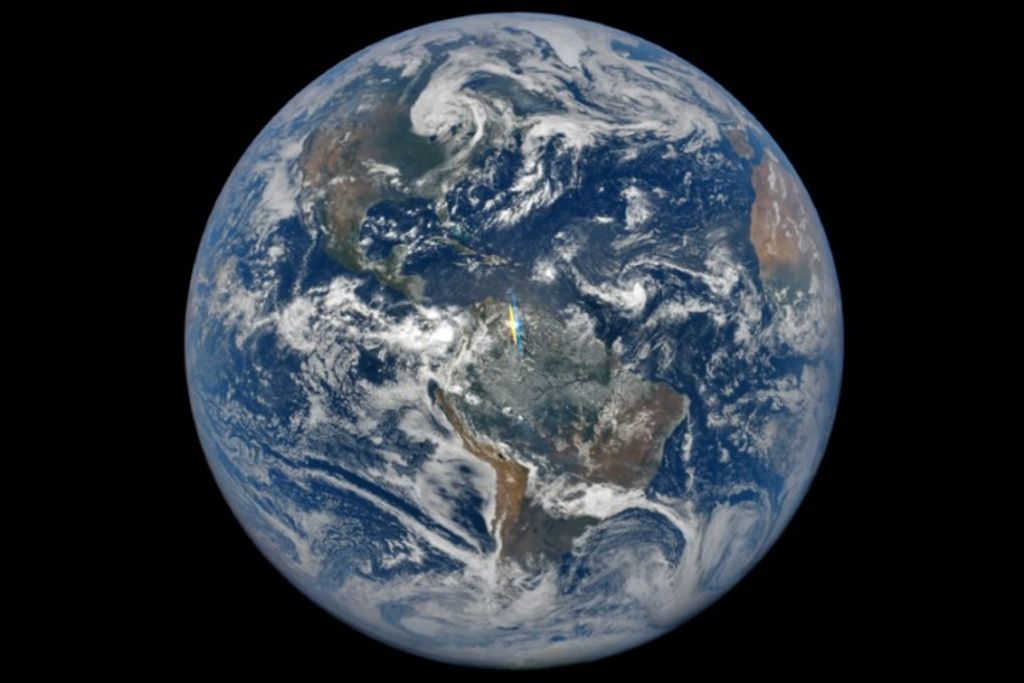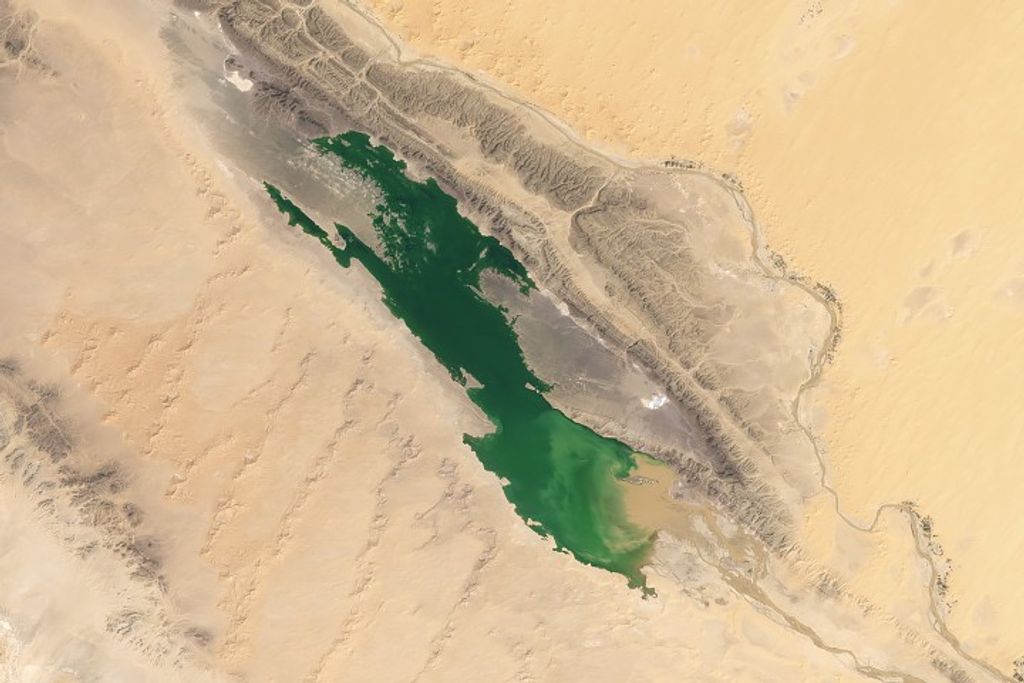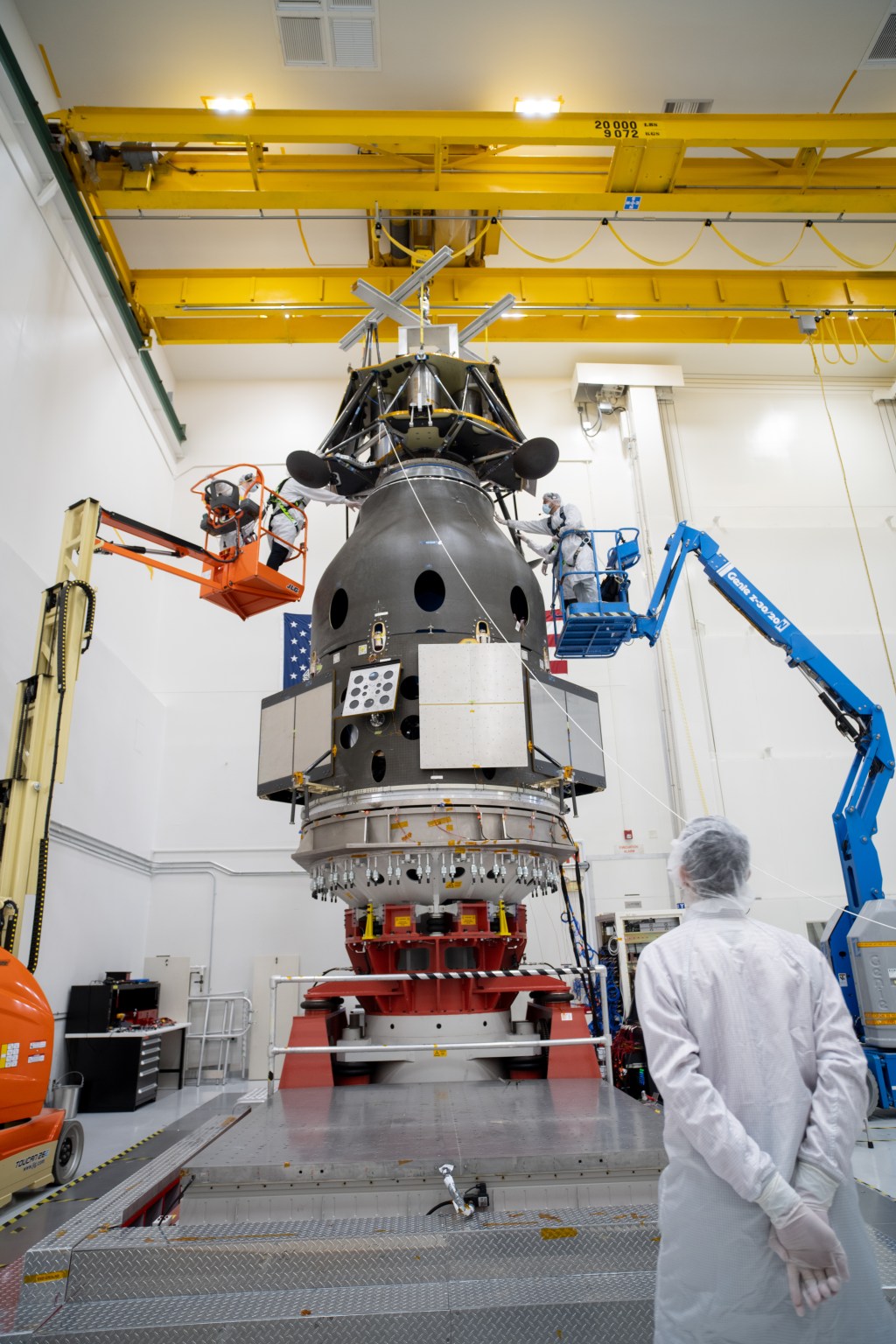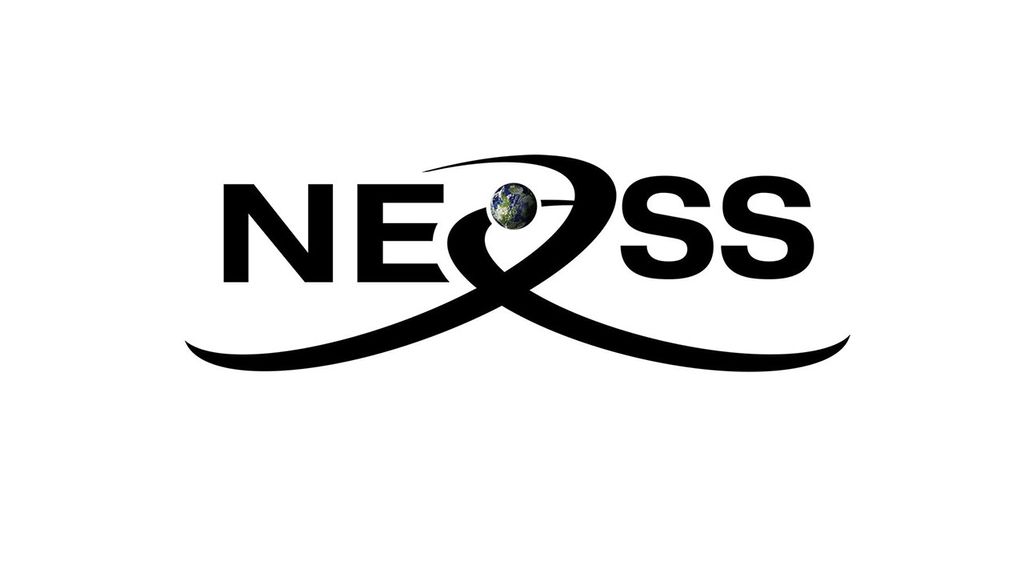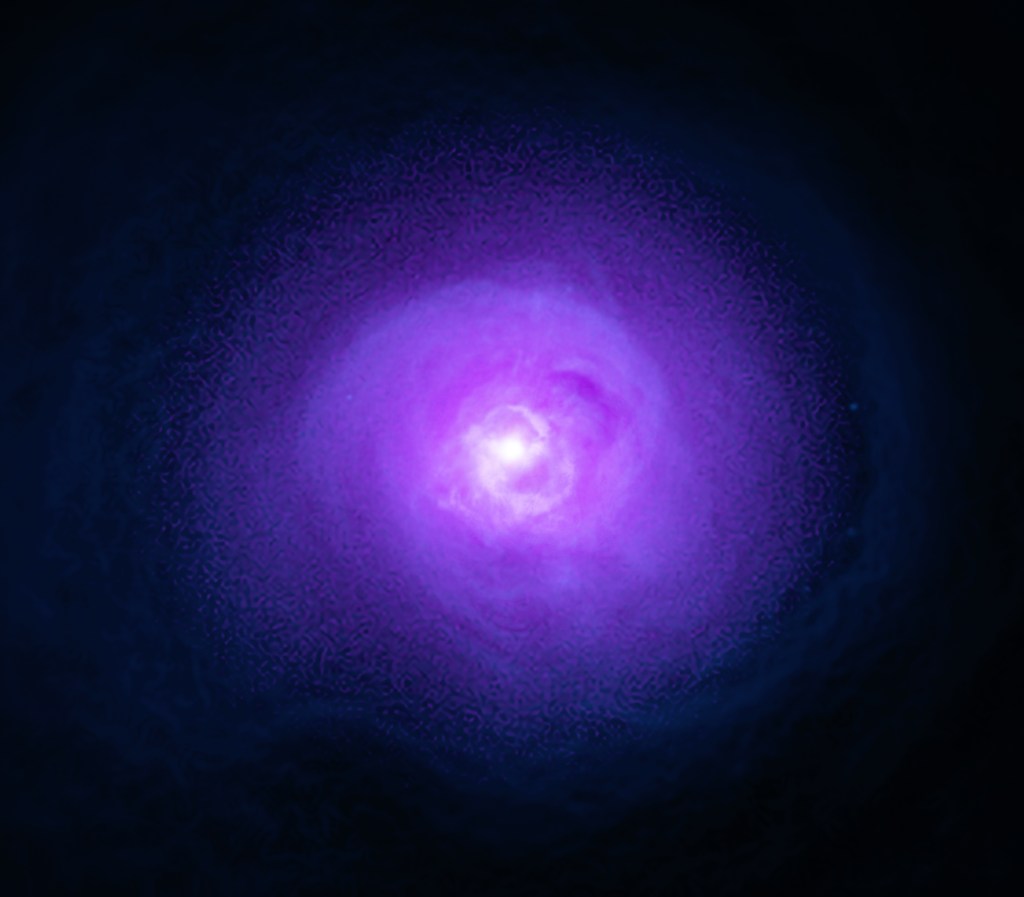1 min read
Webb’s First Deep Field (MIRI and NIRCam Images Side by Side)
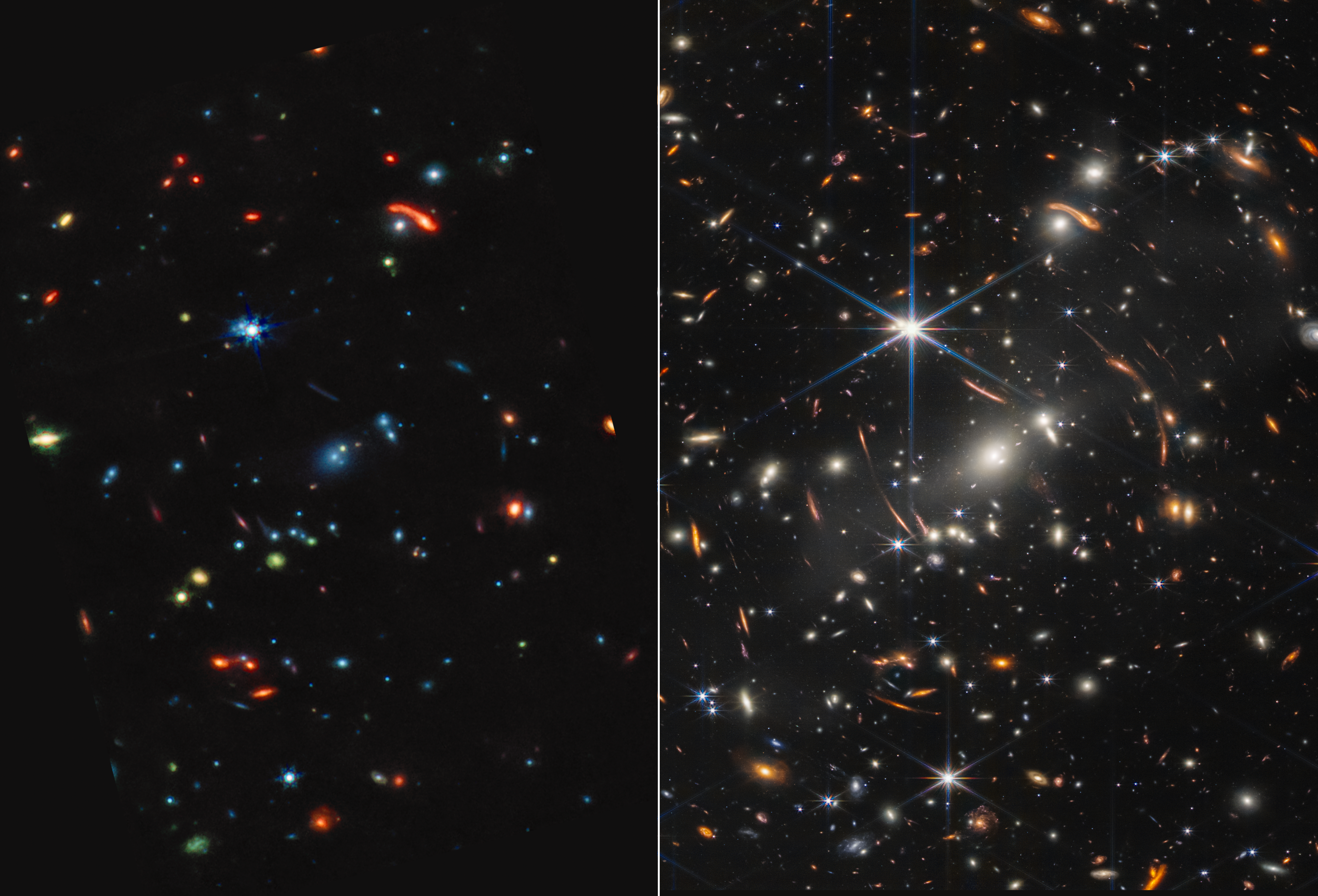
Galaxy cluster SMACS 0723 is a technicolor landscape when viewed in mid-infrared light by NASA’s James Webb Space Telescope. Compared to Webb’s near-infrared image at right, the galaxies and stars are awash in new colors.
Start by comparing the largest bright blue star. At right, it has very long diffraction spikes, but in mid-infrared at left, its smaller points appear more like a snowflake’s. Find more stars by looking for these telltale – if tiny – spikes. Stars also appear yellow, sometimes with green diffraction spikes.
If an object is blue and lacks spikes, it’s a galaxy. These galaxies contain stars, but very little dust. This means that their stars are older – there is less gas and dust available to condense to form new stars. It also means their stars are aging.
The red objects in this field are enshrouded in thick layers of dust, and may very well be distant galaxies. Some may be stars, but research is needed to fully identify each object in the mid-infrared image.
The prominent arcs at the center of the galaxy cluster, which are galaxies that are stretched and magnified by gravitational lensing, appear blue in the Mid-Infrared Instrument (MIRI) image at left and orange in the Near-Infrared Camera (NIRCam) image at right. These galaxies are older and have much less dust.
Galaxies’ sizes in both images offer clues as to how distant they may be – the smaller the object, the more distant it is. In mid-infrared light, galaxies that are closer appear whiter.
Among this kaleidoscope of colors in the MIRI image, green is the most tantalizing. Green indicates a galaxy’s dust includes a mix of hydrocarbons and other chemical compounds.
The differences in Webb’s images are owed to the technical capabilities of the MIRI and NIRCam instruments. MIRI captures mid-infrared light, which highlights where the dust is. Dust is a major ingredient for star formation. Stars are brighter at shorter wavelengths, which is why they appear with prominent diffraction spikes in the NIRCam image.
With Webb’s mid-infrared data, researchers will soon be able to add much more precise calculations of dust quantities in stars and galaxies to their models, and begin to more clearly understand how galaxies at any distance form and change over time.
For a full array of Webb’s first images and spectra, including downloadable files, please visit: https://webbtelescope.org/news/first-images
NIRCam was built by a team at the University of Arizona and Lockheed Martin’s Advanced Technology Center.
MIRI was contributed by ESA and NASA, with the instrument designed and built by a consortium of nationally funded European Institutes (The MIRI European Consortium) in partnership with JPL and the University of Arizona.
Extended Description and Image Alt Text
Extended Description
This frame is split down the middle. Webb’s mid-infrared image is shown at left, and Webb’s near-infrared image on the right. The background of space is black in both images.
The mid-infrared image appears much darker, with many fewer points of light. Stars have very short diffraction spikes. Galaxies and stars also appear in a range of colors, including blue, green, yellow, and red. The galaxies are less focused and more blobby than what is seen in the near-infrared view.
The near-infrared image appears busier, with many more points of light. Thousands of galaxies and stars appear all across the view. They are sharper and more distinct than what is seen in the mid-infrared view. Some galaxies are shades of orange, while others are white. Most stars appear blue with long diffraction spikes, forming eight-pointed star shapes. There are also many thin, long, orange arcs that curve around the center of the image.
Some objects, like the bright stars, galaxies, and arcs appear in both images at the same locations. Other objects are only visible in one view.
Image Alt Text
Mid-infrared and near-infrared images of the galaxy cluster SMACS 0723 shown side by side.
About the Object
- R.A. PositionR.A. PositionRight ascension – analogous to longitude – is one component of an object's position.07:23:19.5
- Dec. PositionDec. PositionDeclination – analogous to latitude – is one component of an object's position.-73:27:15.6
- ConstellationConstellationOne of 88 recognized regions of the celestial sphere in which the object appears.Volans
- DistanceDistanceThe physical distance from Earth to the astronomical object. Distances within our solar system are usually measured in Astronomical Units (AU). Distances between stars are usually measured in light-years. Interstellar distances can also be measured in parsecs.Redshift of cluster is z=0.39 (about 4.24 billion light-years)
- DimensionsDimensionsThe physical size of the object or the apparent angle it subtends on the sky.Image is about 2.4 arcmin across
About the Data
- Data DescriptionData DescriptionProposal: A description of the observations, their scientific justification, and the links to the data available in the science archive.
Science Team: The astronomers who planned the observations and analyzed the data. "PI" refers to the Principal Investigator.This image was created with Webb data from proposal 2736. It is part of Webb Early Release Observations.
The Early Release Observations and associated materials were developed, executed, and compiled by the ERO production team:
Jaclyn Barrientes, Claire Blome, Hannah Braun, Matthew Brown, Margaret Carruthers, Dan Coe, Joseph DePasquale, Nestor Espinoza, Macarena Garcia Marin, Karl Gordon, Alaina Henry, Leah Hustak, Andi James, Ann Jenkins, Anton Koekemoer, Stephanie LaMassa, David Law, Alexandra Lockwood, Amaya Moro-Martin, Susan Mullally, Alyssa Pagan, Dani Player, Klaus Pontoppidan, Charles Proffitt, Christine Pulliam, Leah Ramsay, Swara Ravindranath, Neill Reid, Massimo Robberto, Elena Sabbi, Leonardo Ubeda.
The EROs were also made possible by the foundational efforts and support from the JWST instruments, STScI planning and scheduling, Data Management teams, and Office of Public Outreach.
- InstrumentInstrumentThe science instrument used to produce the data.MIRI, NIRCam
- Exposure DatesExposure DatesThe date(s) that the telescope made its observations and the total exposure time.MIRI: 13 June 2022; NIRCam: 7 June 2022
- FiltersFiltersThe camera filters that were used in the science observations.MIRI>F770W, F1130W, F1280W, F1800W NIRCam>F090W, F150W, F200W, F277W, F356W, F444W
- Object NameObject NameA name or catalog number that astronomers use to identify an astronomical object.SMACS 0723-73 (1RXS J072319.7-732735, SMACSJ0723.3-7327)
- Object DescriptionObject DescriptionThe type of astronomical object.Lensing Galaxy Cluster
- Release DateJuly 12, 2022
- Science ReleaseNASA’s Webb Delivers Deepest Infrared Image of Universe Yet
- CreditImage: NASA, ESA, CSA, STScI

These images are a composite of separate exposures acquired by the James Webb Space Telescope using the MIRI and NIRCam instruments. Several filters were used to sample broad wavelength ranges. The color results from assigning different hues (colors) to each monochromatic (grayscale) image associated with an individual filter. In this case, the assigned colors are: MIRI: Red: F1280W + F1800W Green: F1130W Blue: F770W NIRCam: Red: F444W Orange: F356W Green: F200W +F277W Blue: F090W + F150W

Related Images & Videos
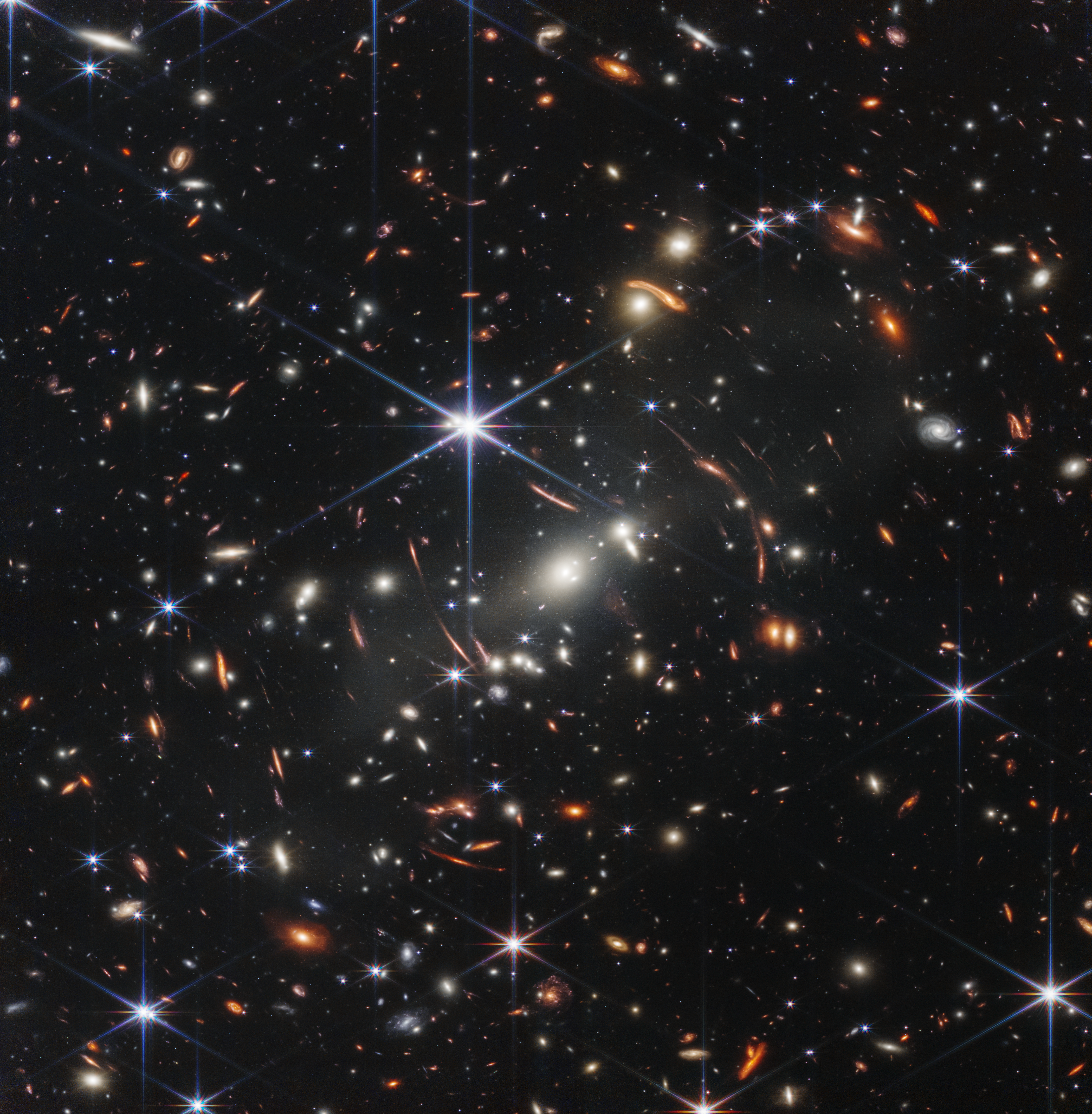
Webb's First Deep Field (NIRCam Image)
Thousands of galaxies flood this near-infrared image of galaxy cluster SMACS 0723. High-resolution imaging from NASA’s James Webb Space Telescope combined with a natural effect known as gravitational lensing made this finely detailed image possible. First, focus on the galaxies...
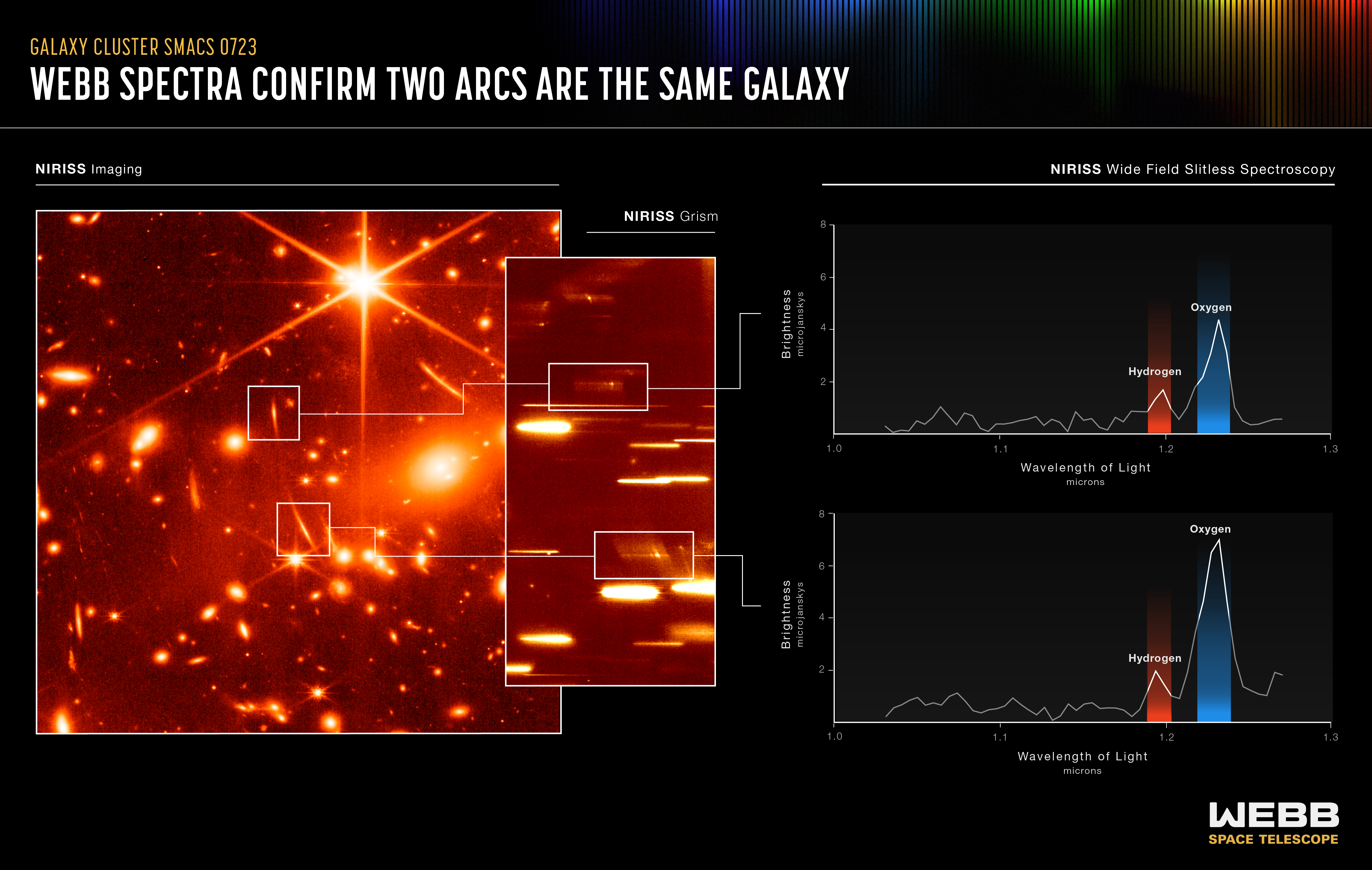
Webb's First Deep Field (NIRISS Emission Spectra)
Want to go on a galactic treasure hunt? Data known as spectra from NASA’s Webb Telescope make it easy to find – and match up – cosmic prizes! At far left is a near-infrared image of galaxy cluster SMACS 0723. A group of massive galaxies below and to the right of the bright...
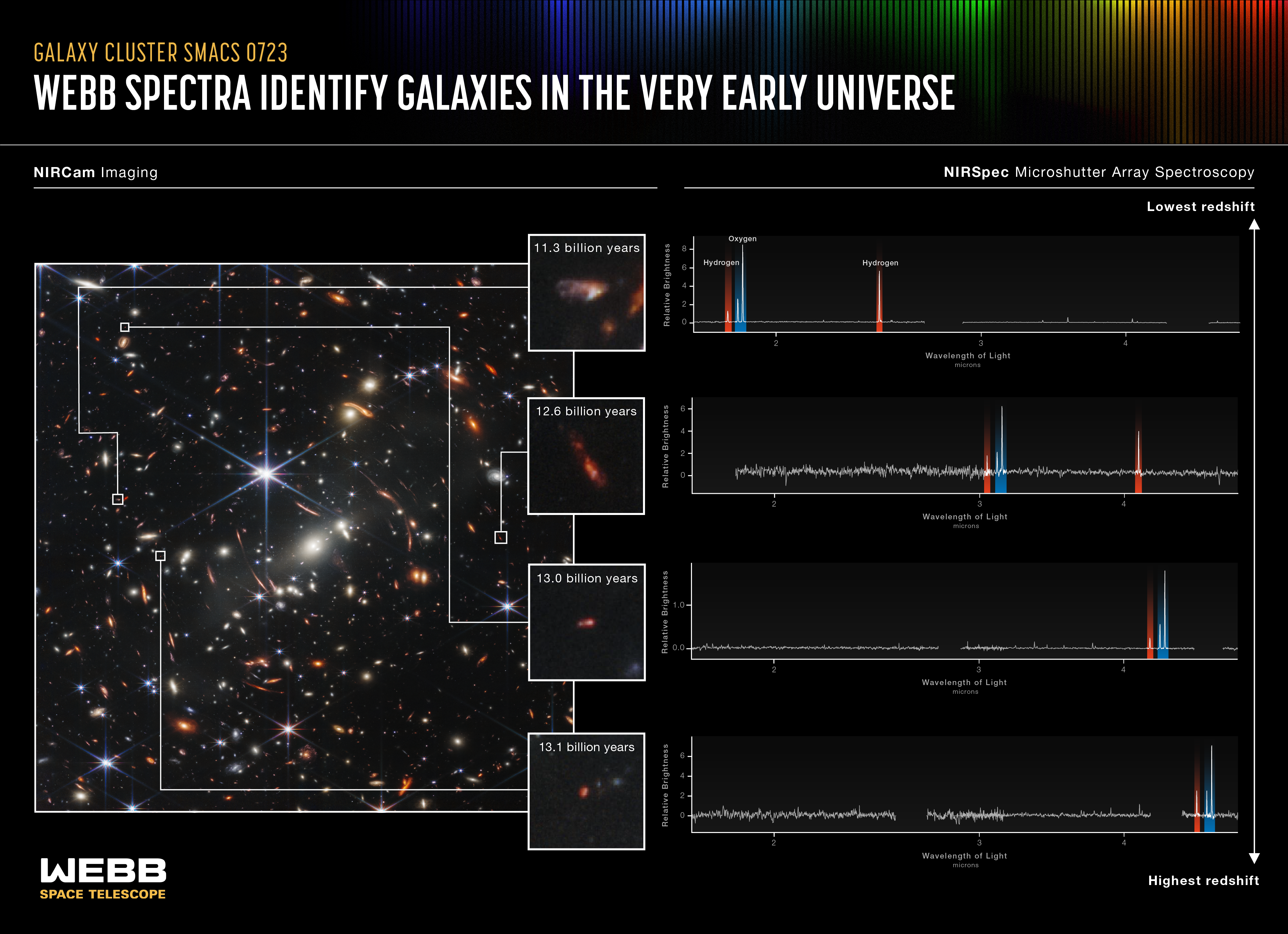
Webb's First Deep Field (NIRSpec MSA Emission Spectra)
NASA’s Webb Telescope has yet another discovery machine aboard – the Near-Infrared Spectrograph’s (NIRSpec’s) microshutter array. This instrument has more than 248,000 tiny doors that can be individually opened to gather spectra (light) of up to approximately 150 individual...
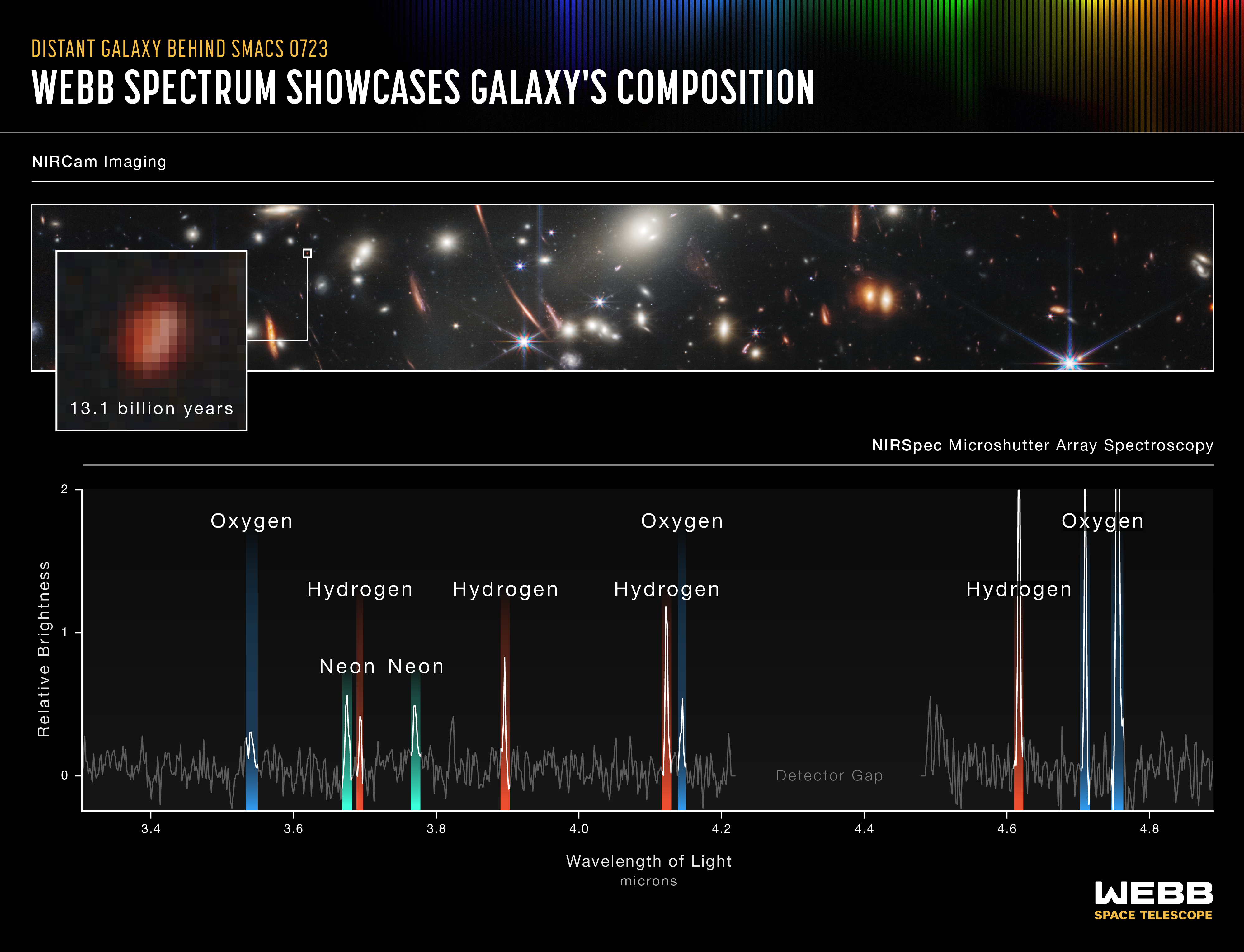
Webb's First Deep Field (NIRSpec Emission Spectrum)
This galaxy emitted its light 13.1 billion years ago. It was captured by Webb’s microshutter array , part of its Near-Infrared Spectrograph (NIRSpec). This instrument is so sensitive that it can observe the light of individual galaxies that existed in the very early universe....
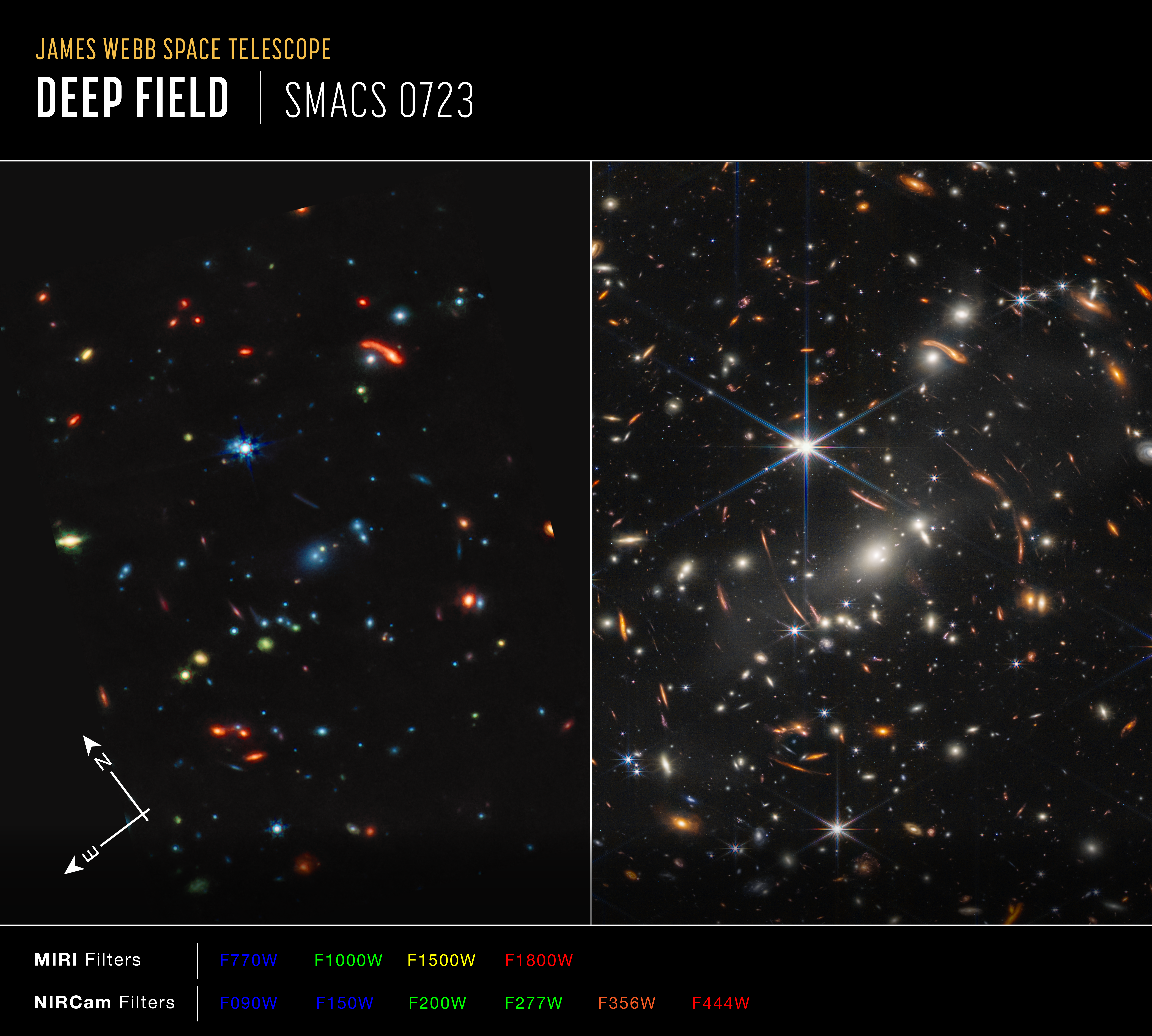
Webb's First Deep Field (MIRI and NIRCam Side-by-Side Compass Image)
Image of galaxy cluster SMACS 0723, affectionately known as Webb’s First Deep Field, captured by Webb’s Near-Infrared Camera (NIRCam) and Mid-Infrared Instrument (MIRI), with compass arrows and color key for reference. The north and east compass arrows show the orientation of...
Share
Details
Laura Betz
NASA’s Goddard Space Flight Center
Greenbelt, Maryland
laura.e.betz@nasa.gov
NASA, ESA, CSA, STScI








